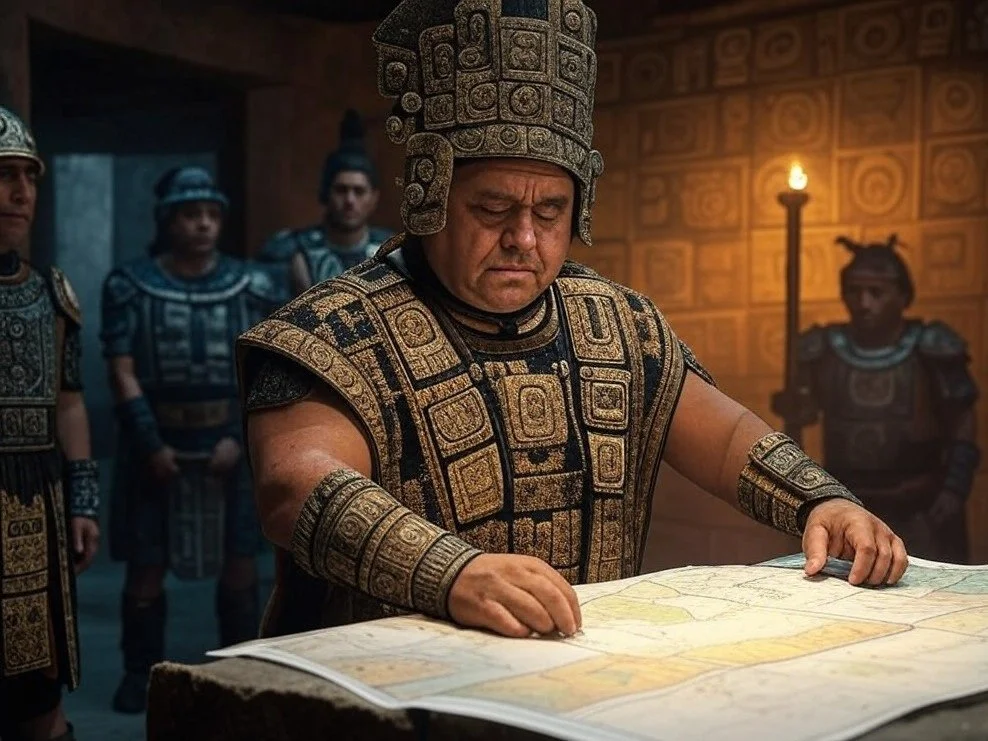Introduction
The Mayan civilization, one of the most sophisticated pre-Columbian cultures of Mesoamerica, flourished between 250 and 900 CE during the Classic period. While often celebrated for its advancements in mathematics, astronomy, and architecture, the Maya also developed complex military strategies and engaged in frequent warfare. Their conflicts were driven by political rivalries, resource competition, and religious motivations. Warfare was a crucial aspect of Mayan society, shaping political structures, trade, and cultural interactions among city-states.
Causes of Warfare
Mayan warfare was primarily influenced by a combination of political, economic, and religious factors:
Political Rivalries – The Mayan civilization was not a unified empire but rather a collection of city-states, such as Tikal, Calakmul, Caracol, and Copán, often competing for dominance.
Resource Scarcity – Control over valuable resources such as water, obsidian, cacao, and salt was a significant driver of conflict.
Religious Motivations – Ritual warfare was common, with captives often sacrificed to the gods as part of religious ceremonies.
Territorial Expansion – Expanding influence and control over neighboring regions led to constant military campaigns and shifting alliances.
Military Organization
The Mayan military was highly structured, consisting of different ranks and units:
Ajaw (King/Ruler) – The supreme leader who often led campaigns personally.
Nacom (War Chief) – A high-ranking official responsible for battlefield strategy and troop movements.
Batabs (Regional Commanders) – Nobles who managed smaller military units within a city-state.
Commoner Soldiers – The bulk of the Mayan army consisted of trained commoners who fought with weapons such as spears, atlatls (spear-throwers), and obsidian-tipped swords.
Elite Warriors – A warrior class, often composed of noble-born individuals, who served as the king’s personal guard and led special operations.
Weapons and Tactics
The Maya utilized an array of weaponry and strategic approaches to warfare:
Weapons:
Obsidian Blades: Sharp and deadly, often used in close combat.
Spears and Atlatls: Allowed for ranged attacks before engaging in melee combat.
Bows and Arrows: Less commonly used than in other Mesoamerican cultures but still effective.
Macuahuitl (Obsidian-Edged Sword): A club-like weapon with embedded obsidian shards.
Armor and Defense:
Warriors wore padded cotton armor hardened with saltwater, providing decent protection while allowing for mobility.
Wooden shields and helmets adorned with feathers and animal pelts provided additional defense.
Tactics:
Ambush Warfare: The Maya often relied on jungle terrain to ambush enemy forces.
Siege Warfare: Cities were fortified with palisades, moats, and elevated platforms. Sieges aimed to cut off food and water supplies.
Psychological Warfare: The Maya employed intimidation tactics, such as ritual war dances and the display of captured enemies.
Strategic Alliances: City-states formed temporary alliances to counter powerful rivals before inevitably breaking ties.
Impact of Warfare
Warfare in the Mayan world had significant consequences:
Political Instability: The frequent battles and shifting alliances led to the rise and fall of powerful city-states.
Cultural Exchange: Military conquests facilitated the exchange of goods, ideas, and technologies between different Mayan polities.
Urban Decline: Prolonged warfare contributed to the eventual decline of some major city-states due to resource depletion and internal strife.
Religious Practices: The capture and sacrifice of enemy elites reinforced religious and political authority, strengthening the divine status of rulers.
Conclusion
Warfare was a fundamental component of the Mayan civilization, shaping its political landscape and influencing its cultural and economic development. The Maya employed sophisticated military tactics, weapons, and strategies, demonstrating their ability to adapt to different forms of combat. While their civilization eventually declined, their martial traditions and strategic innovations left a lasting legacy in Mesoamerican history. Further research into archaeological sites and Mayan inscriptions continues to shed light on the complexities of their warfare and its impact on their society.







